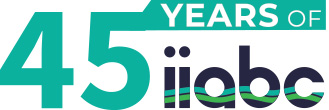Irrigation systems should be designed and operated to supply plant water requirements while minimizing runoff and leaching. To ensure peak irrigation system performance the system design should take into account evapotranspiration (ET), soil type and irrigation system efficiencies.
High frequency irrigation leads to increased surface evaporation and usually a higher rate of transpiration by the plants. Proper scheduling minimizes the frequency of irrigation but maximizes the duration of application that is allowed by the soil and plants. It is better to have an irrigation schedule where irrigation occurs less frequently but fully utilizes water stored in the plants' root zone.
Calculator Users Guides
Calculator User Guides can be downloaded by clicking: Irrigation Calculator Guides and downloading the appropriate guide.
Weather Calculator
The blue weather calculator icon is linked to www.farmwest.com and provides real-time evapotranspiration (ET) information for various locations in British Columbia. Evapotranspiration (ET) is a measurement of the rate that a plant needs water. It is either measured directly using an evaporation pan or atmometer or calculated using climatic data obtained from a weather station. ET data can be used to help an irrigator schedule an irrigation system to ensure that the right amount of water is applied to the crop at the right time. This information is also used in the irrigation calculators to determine an irrigation schedule.
This calculator makes use of Macromedia Flash software. When you launch the calculator it will check to see if you have the appropriate software installed. If it is not installed, you will be prompted to download the software.
Additional factsheets are provided on www.farmwest.com to help develop an irrigation schedule using ET data.
